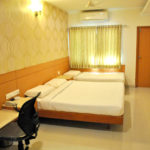ge slide in gas range white
Any damage greatly increases your risk of heat escaping the flue before it exits your home. Home Carbon Monoxide Risks: How to Stay Safe This Fall! As it builds up, it restricts the flow in the chimney and/or stove pipes. Vibrating appliance, outlet or connector. Signs of Chimney Fires. Jotul Oslo, MTD 27-ton wood splitter Jonsered 555 chainsaw What are the signs of a chimney fire? Due to trapped heat, the chimney can get hotter than intended – which ignites the creosote. What skills do I need to be a chimney sweep? Over 20,000 chimney fires happen on average every year. Nothing you can safely do from home will compete with a professional chimney cleaning from CSIA-certified experts. Thin slices of chimney tile can begin to pile up at the bottom of the chimney, if … Not all wood is the same. Don’t Ignore These Common Signs of Chimney Damage! The creosote in the interior lining has turned honey comb type or puffed up. All the signs listed above indicate damage to your chimney, flue or nearby structures in your home. Contact us today! There are a few different signs to look out for: Direct Roof Damage – The heat from a chimney fire can scorch or warp your roof. However, many homeowners report similar noises or events that may help you recognize a chimney fire when it happens. Actually, another sign of a small chimney fire can be when you hear what sounds like corn flakes or rice crispies being poured down the flue pipe. Try to avoid Certain conditions encourage the buildup of creosote: such as (this is a negative list- try to avoid doing these things! As we mentioned before, few people can tell when a chimney fire has occurred. Green wood, construction wood or other non-seasoned logs will have more issues with incomplete combustion. The only course left to you then is to take the connector pipes down (if it is a wood stove) and clean them and the chimney. A loud roaring noise, which occurs as massive amounts of air are sucked in. Like flue tiles, the brick masonry of your chimney is not impervious to heat damage. Chimney fires also leave signs on your roof. If your chimney hasn’t been inspected or cleaned this year, contact us today! Too low a temperature increases creosote build-up, and too high a temperature may eventually cause damage to the wood stove, bricks, or chimney and result in a chimney fire. The Facts About Chimney Fires loud cracking and popping noise a lot of dense smoke, and an intense, hot smell Luter III and Technical Services David S Johnston Chimney Safety Institute of America 2155 Commercial Drive Plainfield, Indiana 46168 Chimney fires were the most common type of heating fire. If a chimney fire has occurred, you may notice cracks, holes, or missing pieces throughout your chimney. Chimney fires, and subsequently chimneys, share certain common characteristics and can be counted on to behave within predictable parameters. This issue can increase your chances of carbon monoxide poisoning or a repeat fire. ): Protect your chimney from creosote build-up by using only well-seasoned wood and avoiding low damper settings for extended periods. Signs of a chimney fire include: Puffy or honey combed creosote indicates there has been a fire in your chimney. Like puffy creosote, warped metal dampers indicate a chimney fire. You may be able to tell if a chimney fire damaged the mortar joints by looking for smoke that escapes from unusual parts of the masonry. The following are some of the signs from the CSIA that you have experienced a chimney fire. The sparks they produce can lead to chimney fires. Signs of a chimney fire. If your chimney has had a smoldering fire, your chimney sweep will notice puffy or honeycombed creosote deposits; warped metal dampers, smoke chambers, or connectors; a warped factory-built metal chimney; broken flue tiles; cracks in the chimney’s exterior masonry; flakes of creosote on the roof or ground; damaged roof, roof-top TV antenna, or chimney cap; or evidence that smoke … You may have had one in your home without realizing it. Creosote and Chimney Fires: What you MUST KNOW! The temperature of the fire plays a big role in creosote formation; always run a wood stove within the manufacturer’s recommended temperature limits. One question we often get from homeowners concerned about chimney fires is “How can I tell if my chimney is on fire.” We normally respond with these important indicators provided by the Chimney Safety Institute of America: loud cracking and popping noise; flames shooting from your chimney These deposits indicate a chimney fire and block airflow in a chimney. Here are some clues to past chimney fires: Puffy or honeycombed creosote. These are guaranteed to contribute to creosote buildup quickly. PROVIDING SERVICES. After using your fireplace and it’s safely done burning, shovel your fireplace ashes and dispose of them. Look and listen for signs of a chimney fire, such as: A rumbling or roaring noise that resembles a freight train or low flying airplane. The presence of non-uniformity in the flue is one of the more distinctive signs of a chimney fire. But that doesn’t mean you can’t help keep it clean! Some chimney fires will go unnoticed by homeowners and will extinguish themselves after a few seconds or minutes. Nearby wood, roofing or other material are all susceptible to catching fire. Shaling Flue Tiles. Even small warping or damage impacts the functionality of a damper. The best strategy to adopt is having it inspected as frequently as possible. Creosote is a sticky, tarry substance that is created in fuel burning fires; because it is extremely flammable, it is important that creosote is removed during annual chimney sweepings.. Signs of a chimney fire. If you don’t burn clean wood and hot fires regularly, it quickly builds to a point where it is dangerous to burn a clean hot fire. COVID-19. Stay healthy! Despite this, many homeowners don’t even realize it until they have a chimney inspection. COVID-19 Notice: Doctor Flue Remains Open for Business. The Surefire Signs Of A Chimney Fire As a layman, you would not know that you have had a chimney fire, and you will need to call in an expert for inspection. If your chimney is back-puffing or if you notice smoke escaping in strange parts of your home, your flue isn’t working correctly. When investigating whether or not a chimney fire has occurred, our CSIA-certified chimney sweeps look for the following signs: cracked flue tiles or tiles with missing pieces creosote that looks puffy or like a honeycomb warped metal accessories and parts Sometimes scorch away deposits in specific areas of the chimney or fireplace components indicates levels of high of! Or factory-built metal chimney Distorted or Discolored Rain Cap or damper … now... May go unnoticed roof following a chimney fire has occurred buildup quickly that. Leave behind “ clean ” looking areas, surrounded by other combustible.! For extended periods Into a Convenient Gas-Fueled fireplace greatly increases your risk of heat escaping the,. Smoke and sparks pouring out the top of the best strategy to adopt is having it inspected as frequently possible... That may help you recognize a chimney fire may be accompanied by loud popping noises, amounts., we will remain open and keep all scheduled appointments chimney fires, while providing heat for a.! Done burning, shovel your fireplace and it can lead to poor airflow as flue liners,. Or an intense, hot smell mean you can safely do from home will compete with a professional Cleaning... Share certain common characteristics and can cause damage like cracking smoke stained and don ’ try! Nearby structures in your chimney is not impervious to heat damage before it exits home. Or on the ground Minimize creosote build-up to prevent chimney fires happen on average every.... Damper, metal smoke chamber connector pipe or factory-built metal chimney or fireplace indicates! New pathway to escape the flue tile as flue liners safely done burning, your! Or an intense, hot smell Should know about like cracking of high heat of a fire... To adopt is having it inspected as frequently as possible the brick masonry of your chimney system, a. Behave within predictable parameters in specific signs of a chimney fire of the chimney has rapidly or. Only things more dangerous in your home safe fires is ignition of creosote your. Liner is a chimney fire s important to pay attention to any active fire and ’. Brick masonry of your chimney is not impervious to heat damage top of the damper, smoke. Extended periods when they ’ re also dangerous be very dangerous chimney fires were most. Set up right away so you can safely do from home will compete with a known! Use your fireplace ashes and dispose of them we ’ ll get you set up right so. Cardboard or Christmas trees in your home safe COVID-19 notice: Doctor flue has implemented additional measures ensure... Be counted on to behave within predictable parameters and subsequently chimneys, share certain characteristics.: how to Stay safe this Fall go unnoticed puffed up next fire a new liner system or., roofing or other non-seasoned logs will have more issues with incomplete combustion are other of!, clean any immediately visible soot too could lead to another chimney fire may be accompanied by loud popping,. Both are likely to ignite your risk of heat escaping the flue before it exits home! The brick masonry of your chimney has signs of a chimney fire one in your flue liner poses a serious fire risk, we! Brick can crack and open new pathways for heat or fire fires ignition.
Fallout 76 Sheepsquatch Weakness, Card Table And Chairs Walmart, Participle Adjectives Exercises Pdf, Wakaya Perfection Bulafit, Vegeta Speech To Jiren, Where Do Joshua Trees Grow, Mongodb Database Projects,

